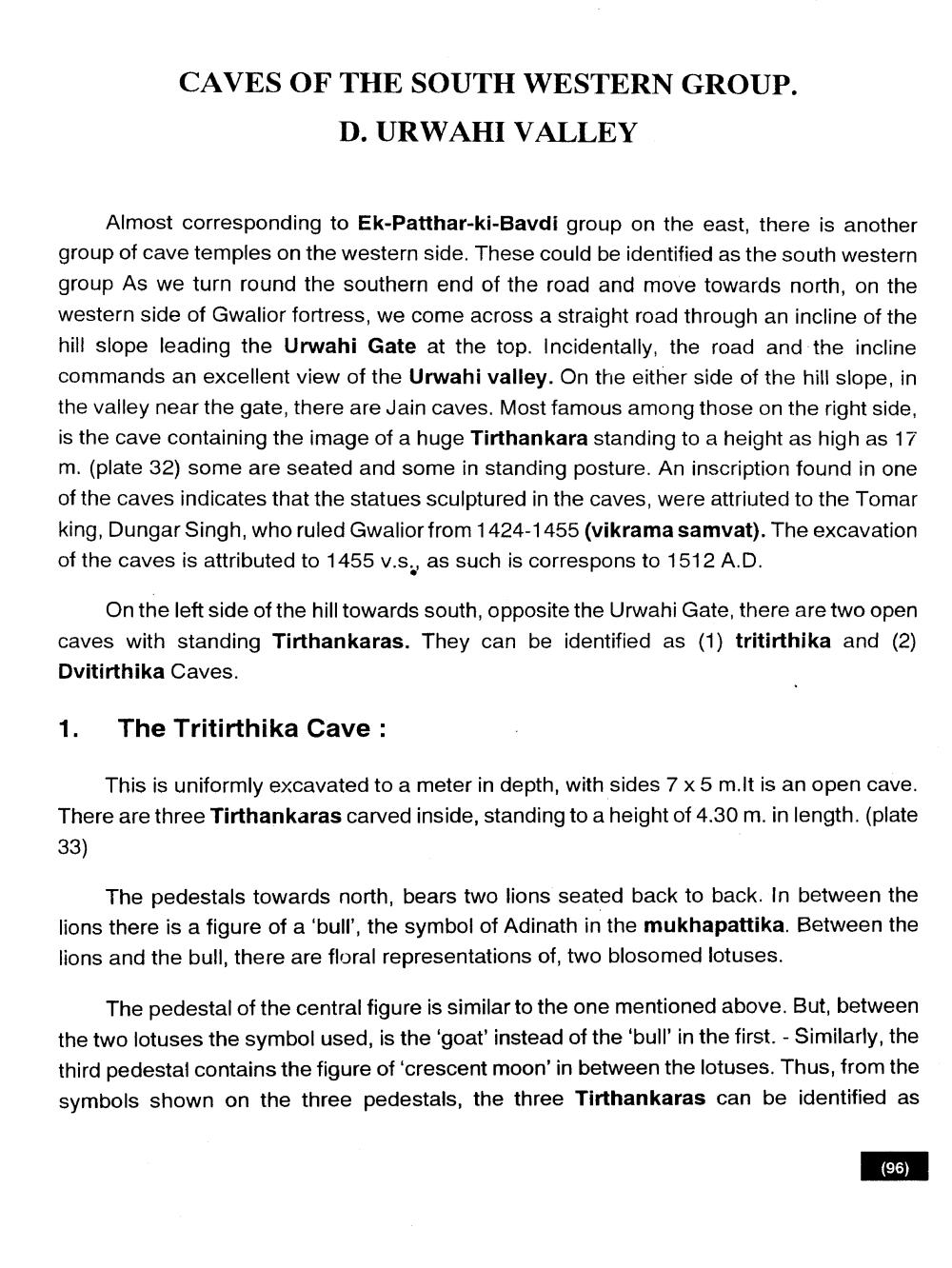________________
CAVES OF THE SOUTH WESTERN GROUP. D. URWAHI VALLEY
Almost corresponding to Ek-Patthar-ki-Bavdi group on the east, there is another group of cave temples on the western side. These could be identified as the south western group As we turn round the southern end of the road and move towards north, on the western side of Gwalior fortress, we come across a straight road through an incline of the hill slope leading the Urwahi Gate at the top. Incidentally, the road and the incline commands an excellent view of the Urwahi valley. On the either side of the hill slope, in the valley near the gate, there are Jain caves. Most famous among those on the right side, is the cave containing the image of a huge Tirthankara standing to a height as high as 17 m. (plate 32) some are seated and some in standing posture. An inscription found in one of the caves indicates that the statues sculptured in the caves, were attriuted to the Tomar king, Dungar Singh, who ruled Gwalior from 1424-1455 (vikrama samvat). The excavation of the caves is attributed to 1455 v.s, as such is correspons to 1512 A.D.
On the left side of the hill towards south, opposite the Urwahi Gate, there are two open caves with standing Tirthankaras. They can be identified as (1) tritirthika and (2) Dvitirthika Caves.
1. The Tritirthika Cave:
This is uniformly excavated to a meter in depth, with sides 7 x 5 m.It is an open cave. There are three Tirthankaras carved inside, standing to a height of 4.30 m. in length. (plate 33)
The pedestals towards north, bears two lions seated back to back. In between the lions there is a figure of a 'bull', the symbol of Adinath in the mukhapattika. Between the lions and the bull, there are floral representations of, two blosomed lotuses.
The pedestal of the central figure is similar to the one mentioned above. But, between. the two lotuses the symbol used, is the 'goat' instead of the 'bull' in the first. Similarly, the third pedestal contains the figure of 'crescent moon' in between the lotuses. Thus, from the symbols shown on the three pedestals, the three Tirthankaras can be identified as
-
(96)




